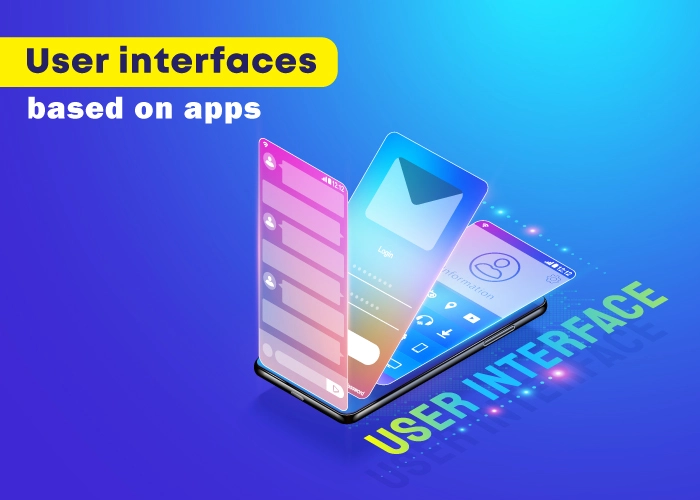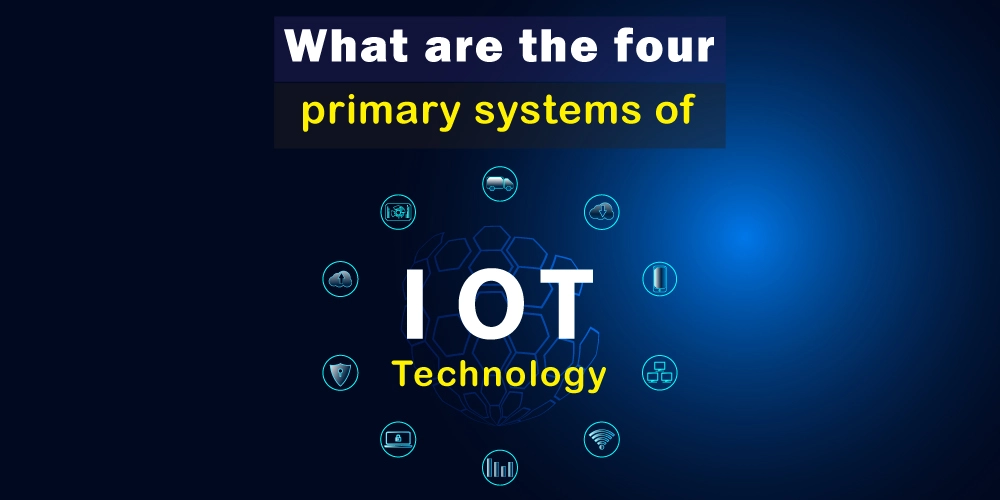The Internet of Things, or IoT, is a symphony of gadgets altering our environment by gathering and sharing data. But what is directing this elaborate dance? The four basic IoT technology systems are examined in this article. If you comprehend these fundamental systems, you’ll have a greater appreciation for the IoT technologies that seamlessly connect your surroundings. Let’s talk about the four primary systems of IoT technology.
The Internet of Things Development
With standard devices able to connect to the Internet and communicate with one another, the IoT environment has swiftly changed. This has caused a massive change in several areas, including manufacturing, transportation, healthcare, and agriculture.
IoT’s Effect on Different Industries
IoT technology has enabled more effective operations, better customer service, and better decision-making processes, revolutionizing several industries. It has raised the worth of companies and changed how we interact with the real world.
The Four Main IoT Technology Systems
The importance of IoT technology in today’s world cannot be overstated. It is essential for promoting efficiency and innovation in a variety of businesses. IoT technology is expected to continue evolving and deliver ever more sophisticated capabilities, making it a crucial component of today’s technological environment. Four central systems form the foundation of the Internet of Things, collaborating to produce a streamlined and effective network of interconnected devices. The efficacy and operation of IoT technologies depend on these mechanisms. The following are the four central systems:
Interconnectivity
IoT device connections can be made using one of two primary methods:
Connectivity via Wire
Wired connections are less prevalent because of mobility restrictions. Still, they have low latency and high bandwidth benefits, making them perfect for applications that need real-time data transfer. Ethernet and USB are two examples.
Unwired Transmission
Because they are easier to set up and provide more flexibility, wireless connections are popular in the Internet of Things. But it’s important to consider power consumption, bandwidth, and range. Cellular networks, Bluetooth, and WiFi are a few common choices.
Data Acquisition and Sensors
IoT solutions gather dependable, high-quality data as the basis for insightful decisions and wise actions. There are many different kinds of sensors, each made to measure and identify particular elements of the natural environment. A few typical sensors in Internet of Things applications are:
Sensors of Temperature
Determines the amount of heat present in a space or an object. It is utilized in industrial operations, HVAC systems, and smart thermostats.
Sensors of Humidity
It is frequently used in HVAC systems, agriculture, and environmental monitoring to detect the amount of moisture in the air.
Motion Detectors
It detects movement inside a space in security systems, automatic lighting, and smart home appliances.
Sensors of Light
Measures the light intensity and is utilized in controls for outdoor lights, intelligent lighting systems, and smartphones. Pressure sensors calculate the force that a gas or liquid produces. It is used in medical equipment, industrial automation, and weather forecasting. Proximity sensors identify whether an object is there or not. They are employed in manufacturing, automobile systems, and cell phones. Accelerometers are used in cell phones, wearable technology, and car monitoring systems to measure acceleration forces.
oscilloscopes

Measures rotational motion and direction; frequently found in gaming consoles, smartphones, and drones. Gas sensors identify the gases that are present in the surrounding air.In environmental sensing, industrial safety, and air quality monitoring, we use it. In wearable technology and healthcare, people use biosensors to measure their own biological characteristics such as glucose levels and heart rate.
Analytics and Data Management
Robust storage and administration solutions are necessary due to the sheer volume and variety of data created by Internet of Things devices. Platforms for cloud storage have become the standard option for several reasons:
The ability to scale
We can easily scale up or down cloud storage to match varying data quantities.
Availability
With an internet connection, data may be accessible from any location, allowing for remote monitoring and analysis.
Safety
Cloud providers use robust security protocols to protect sensitive IoT data. Platforms for data management created especially for Internet of Things applications provide extra features like:
Data intake
Effectively gather and combine data from many formats and types of sensors.
Organizing and sifting data
Sort and organize data to make the analysis simpler.
Processing data in real-time
Applications must be able to analyze data almost instantaneously for an immediate response.
Applications and User Interfaces (UI/apps)
The user interface (UI) and apps serve as a conduit between humans and the complicated world of IoT devices. They offer a means of controlling linked devices, interacting meaningfully with the Internet of Things, and visualizing the data gathered by sensors. In Internet of Things systems, user interfaces fall into two major categories:
Device-Level User Interfaces
Frequently, processor speed and size constrain these interfaces located on the actual devices. For example, consider the following:
Status lights on routers and thermostats are LED lights. Wearables have tiny screens that show simple information like heart rate or step count.
User interfaces based on apps

These interfaces provide a more thorough user experience and can be accessible via PCs, tablets, or cell phones. They can offer attributes such as:
Dashboards that show sensor data over time or in real-time. Remotely manage connected devices and change settings with these controls. Configuration options for a customized user interface. We use tools for analytics and reporting to extract knowledge from the gathered data. The design of an IoT system’s user interface significantly impacts how usable and widely accepted it is. For an IoT UI design to be effective, keep the following points in mind:
Clarity and Simplicity
The user interface should be simple enough for non-technical individuals to navigate and comprehend.
Information Visualisation
When presenting complex data, use simple visuals like graphs, charts, and iconography.
Privacy and Security

IoT security and privacy are the fifth primary systems, in addition to the first four. They are essential to the technology. IoT systems’ interconnectedness poses exceptional security and privacy issues. The lack of security patches, low computing power, and weak passwords make IoT devices easy targets for hackers. These are a few typical security risks:
Hacking
Malicious actors may use weaknesses in networks or devices to obtain access without authorization, which could disrupt operations, cause data theft, or attack other systems.
Breach of Data
In a data breach, private information, home security footage, and industrial process data—among other sensitive data gathered by IoT devices—may be intercepted or stolen, resulting in legal ramifications and monetary damages.
Attacks with Botnets
Large networks of compromised IoT devices can launch Distributed Denial-of-Service (DDoS) attacks, overwhelming servers and interfering with vital services.
Attackers that use denial-of-service (DoS) techniques can take down entire networks or specific devices, making them inaccessible to authorized users. Because of the potential for severe consequences, these dangers emphasize how crucial strong security measures are for every IoT deployment.
How do IoT Systems Work?
IoT systems collaborate seamlessly between physical devices, communication networks, and data management platforms. Imagine an IoT system for a smart home. Sensors in your thermostat monitor the temperature. This data travels over your WiFi network to the cloud.Your phone app processes and displays the information.Overall, IoT systems are a powerful combination of hardware, software, and connectivity that bridge the gap between the physical and digital worlds, allowing us to collect data, gain insights, and ultimately make smarter decisions and take automated actions in various aspects of our lives.
In summary
These four central systems—device hardware, networking, data processing and analytics, and user interface—power the Internet of Things ecosystem. They provide a robust and seamless network that spurs innovation across all industries, allowing for increased automation, better decision-making, and global connectivity. These systems will be crucial in determining the direction of anything from smart homes to industrial automation as IoT technology develops.

